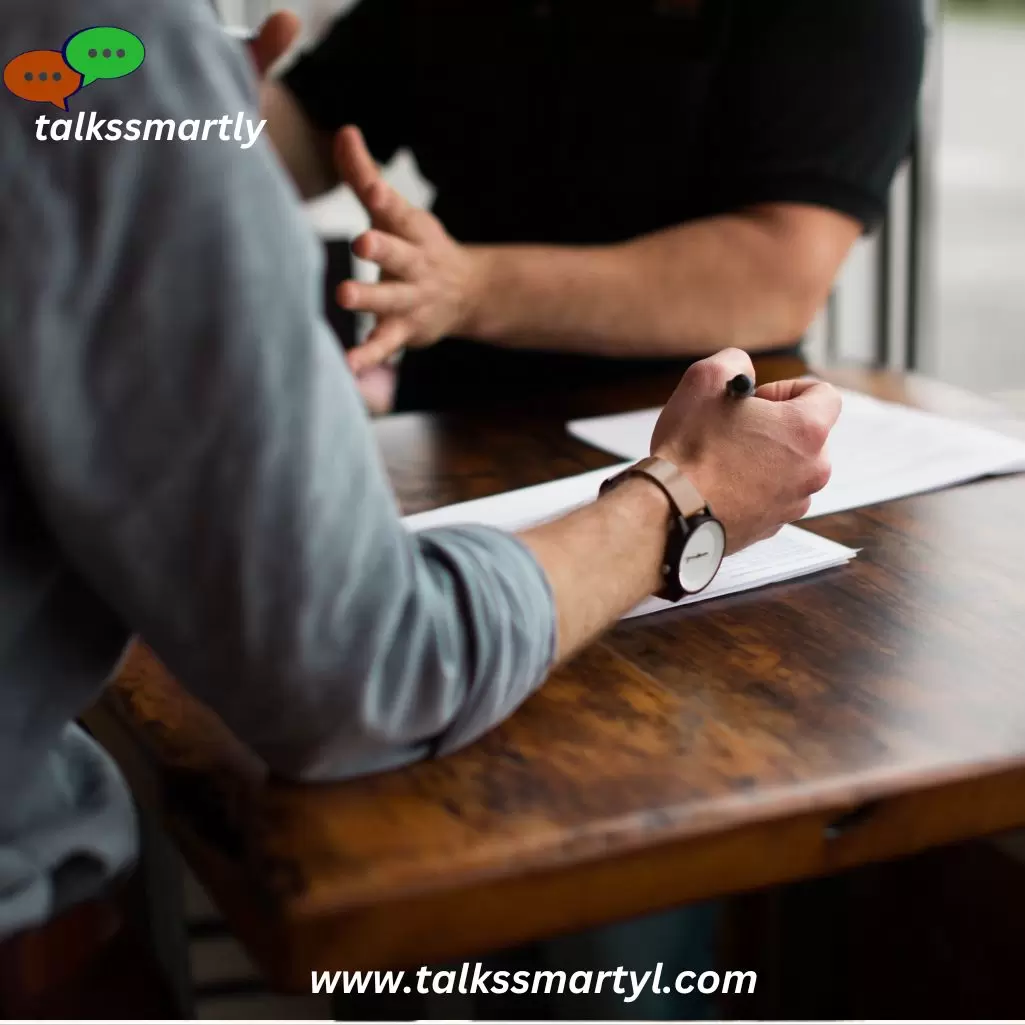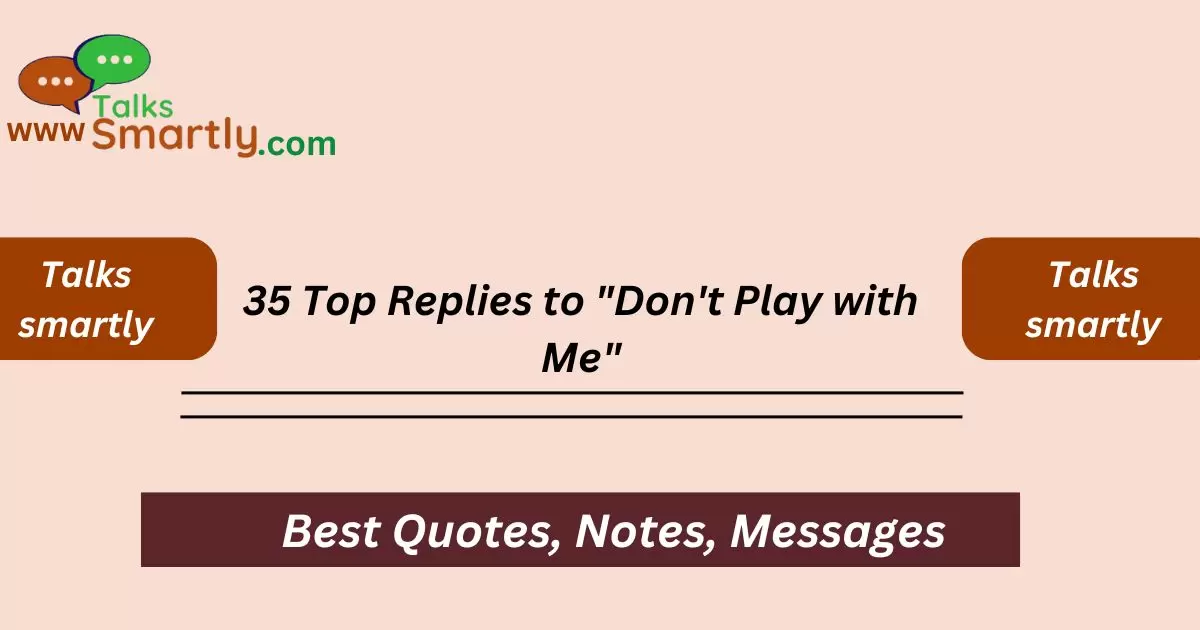Need a solid reply to “Don’t play with me”? Here are 35 top responses to handle any situation effectively.
This phrase can arise in various contexts, from personal disagreements to professional disputes. Knowing how to respond appropriately can help ensure that the conversation remains respectful and productive.
Choosing the right reply to “Don’t play with me” is essential for navigating the conversation effectively. Whether you’re addressing a concern, defusing tension, or clarifying misunderstandings, the right response can make a significant difference. This blog post offers 35 top responses to help you handle such situations with confidence.
By understanding and utilizing these responses, you’ll be equipped to manage serious conversations with grace and clarity. These replies are designed to address the seriousness of the statement while maintaining a respectful and solution-focused dialogue.
35 Top Replies to “Don’t Play with Me”
- “I’m serious, but I’m also here to listen.”
- Acknowledges seriousness while showing that you are open to hearing their perspective.
- “I understand your concern. Let’s talk this through.”
- Validates their feelings and suggests a calm and constructive discussion.
- “I’m not here to play games. What’s on your mind?”
- Emphasizes that you are focused on addressing the issue directly.
- “I get it. Let’s handle this like adults.”
- Promotes a mature approach to resolving the situation.
- “I’m here to work things out, not to play games.”
- Clarifies your intent to resolve the issue seriously.
- “I hear you. Let’s resolve this issue together.”
- Acknowledges their message and suggests a collaborative approach.
- “I understand. Let’s keep this conversation productive.”
- Shows respect for their seriousness and focuses on constructive dialogue.
- “I’m not here to mess around. What do you need?”
- Emphasizes seriousness and asks for clarification on their needs.
- “Let’s cut to the chase. What’s the issue?”
- Gets straight to addressing the problem without unnecessary delay.
- “I’m here to find a solution, not to play games.”
- Highlights your commitment to solving the issue rather than engaging in trivial matters.
- “Let’s get serious and focus on solving this problem.”
- Encourages a serious approach to resolving the issue at hand.
- “I’m not here to fool around. How can we address this?”
- Makes it clear that you are focused on addressing the problem seriously.
- “I’m taking this seriously. What’s the main concern?”
- Shows that you are focused on understanding and addressing their primary “I’m committed to resolving this issue. What can we do?”
- Demonstrates your dedication to finding a resolution.
- “Let’s approach this with respect and find a solution.”
- Emphasizes respect and collaboration in finding a solution.
- “I’m here to have a serious conversation. What’s the issue?”
- Indicates readiness for a serious discussion and seeks clarification.
- “I understand the seriousness. How do you propose we move forward?”
- Acknowledges the seriousness and seeks their input on the next steps.
- “I’m not here to play around. Let’s address the problem.”
- Clarifies your intent to address the issue directly and seriously.
- “I respect your stance. Let’s work on resolving this.”
- Shows respect for their position and suggests working together to resolve the issue.
- I’m focused on solving this. What’s your main concern?”
- Highlights your focus on problem-solving and seeks their main concern.
- “Let’s handle this matter with the seriousness it deserves.”
- Promotes a serious approach to dealing with the issue.
- “I’m here to address this issue honestly. What’s the challenge?”
- Indicates your commitment to addressing the problem honestly and directly.
- “I’m ready to address this issue head-on. What do you need from me?”
- Shows preparedness to confront the problem and asks how you can assist.
- “I’m taking this seriously. What’s the best way to resolve it?”
- Emphasizes seriousness and seeks the best approach to resolving the issue.
- “I’m committed to finding a solution. What’s your concern?”
- Demonstrates your commitment to solving the issue and seeks their concern.
- “I’m not joking around. Let’s get to the heart of the matter.”
- Clarifies that you are focused on addressing the core issue.
- “I hear you. Let’s figure out how to resolve this issue.”
- Acknowledges their message and suggests working together to find a resolution.
- “I’m here to have a real conversation. What’s the problem?”
- Indicates that you are ready for a genuine discussion and seeks to understand the problem.
- “Let’s get serious and tackle this issue together.”
- Encourages a serious and collaborative approach to solving the problem.
- “I’m focused on resolving this matter. What’s the main issue?”
- Shows dedication to resolving the issue and seeks to identify the main problem.
- “I’m here to handle this seriously. What’s your main concern?”
- Highlights your intent to handle the issue seriously and asks for their main concern.
- “Let’s keep this conversation focused on finding a solution.”
- Emphasizes keeping the discussion focused on resolution.
- “I understand the gravity of the situation. What’s the next step?”
- Acknowledges the seriousness and seeks guidance on the next steps.
- “I’m here to deal with this matter seriously. What do you need?”
- Shows commitment to dealing with the issue seriously and asks what is needed.
- “Let’s address this issue with the respect it deserves.”
- Promotes addressing the issue with respect and seriousness.
35 Top Replies to “Don’t Play with Me”
1. “I’m serious, but I’m also here to listen.”
Acknowledges seriousness while showing that you are open to hearing their perspective.
Example: If a colleague says, “Don’t play with me,” you could respond with, “I’m serious, but I’m also here to listen. What’s the issue?”
2. “I understand your concern. Let’s talk this through.”
Validates their feelings and suggests a calm and constructive discussion.
Example: If a friend says, “Don’t play with me,” you might reply, “I understand your concern. Let’s talk this through and find a solution.”
3. “I’m not here to play games. What’s on your mind?”
Emphasizes that you are focused on addressing the issue directly.
Example: If someone is upset, you could say, “I’m not here to play games. What’s on your mind that we need to address?”
4. “I get it. Let’s handle this like adults.”
Promotes a mature approach to resolving the situation.
Example: If a situation gets heated, respond with, “I get it. Let’s handle this like adults and figure out a solution.”
5. “I’m here to work things out, not to play games.”

Clarifies your intent to resolve the issue seriously.
Example: If someone accuses you of being flippant, reply, “I’m here to work things out, not to play games. What’s the real issue?”
6. “I hear you. Let’s resolve this issue together.”
Acknowledges their message and suggests a collaborative approach.
Example: If a team member says, “Don’t play with me,” respond with, “I hear you. Let’s resolve this issue together and find a way forward.”
7. “I understand. Let’s keep this conversation productive.”
Shows respect for their seriousness and focuses on constructive dialogue.
Example: If a discussion turns tense, you could say, “I understand. Let’s keep this conversation productive and work on a solution.”
8. “I’m not here to mess around. What do you need?”
Emphasizes seriousness and asks for clarification on their needs.
Example: If someone feels you’re not taking them seriously, respond, “I’m not here to mess around. What do you need to address this situation?”
9. “Let’s cut to the chase. What’s the issue?”
Gets straight to addressing the problem without unnecessary delay.
Example: If the conversation is dragging, say, “Let’s cut to the chase. What’s the issue that we need to resolve?”
10. “I’m here to find a solution, not to play games.”
Highlights your commitment to solving the issue rather than engaging in trivial matters.
Example: If someone is frustrated, reply, “I’m here to find a solution, not to play games. What’s the problem we need to tackle?”
11. “Let’s get serious and focus on solving this problem.”
Encourages a serious approach to resolving the issue.
Example: If there’s tension, say, “Let’s get serious and focus on solving this problem together.”
12. “I’m not joking around. How can we address this?”
Makes it clear that you are focused on addressing the problem seriously.
Example: If someone feels dismissed, respond, “I’m not joking around. How can we address this issue?”
13. “I’m taking this seriously. What’s the main concern?”
Shows that you are focused on understanding and addressing their primary concern.
Example: If there’s confusion, reply with, “I’m taking this seriously. What’s the main concern we need to discuss?”
14. “I’m committed to resolving this issue. What can we do?”
Demonstrates your dedication to finding a resolution.
Example: If someone is upset, say, “I’m committed to resolving this issue. What can we do to fix it?”
15. “Let’s approach this with respect and find a solution.”
Emphasizes respect and collaboration in finding a solution.
Example: If there’s a conflict, respond, “Let’s approach this with respect and find a solution that works for both of us.”
Humorous Responses to Being Fired
16. “I’m here to have a serious conversation. What’s the issue?”
Indicates readiness for a serious discussion and seeks clarification.
Example: If someone is frustrated, say, “I’m here to have a serious conversation. What’s the issue we need to address?”
17. “I understand the seriousness. How do you propose we move forward?”
Acknowledges the seriousness and seeks their input on the next steps.
Example: If the conversation is tense, reply, “I understand the seriousness. How do you propose we move forward to resolve this?”
18. “I’m not here to play around. Let’s address the problem.”
Clarifies your intent to address the issue directly and seriously.
Example: If someone feels ignored, say, “I’m not here to play around. Let’s address the problem and find a solution.”
19. “I respect your stance. Let’s work on resolving this.”
Shows respect for their position and suggests working together to resolve the issue.
Example: If a friend is upset, respond with, “I respect your stance. Let’s work on resolving this together.”
20. “I’m focused on solving this. What’s your main concern?”
Highlights your focus on problem-solving and seeks their main concern.
Example: If there’s a disagreement, say, “I’m focused on solving this. What’s your main concern that we need to address?”
21. “Let’s handle this matter with the seriousness it deserves.”
Promotes a serious approach to dealing with the issue.
Example: If someone is upset, respond with, “Let’s handle this matter with the seriousness it deserves and find a resolution.”
22. “I’m here to address this issue honestly. What’s the challenge?”
Indicates your commitment to addressing the problem honestly and directly.
Example: If someone feels ignored, say, “I’m here to address this issue honestly. What’s the challenge we need to tackle?”
23. “I’m ready to address this issue head-on. What do you need from me?”
Shows preparedness to confront the problem and asks how you can assist.
Example: If the situation is tense, respond with, “I’m ready to address this issue head-on. What do you need from me to resolve it?”
24. “I’m taking this seriously. What’s the best way to resolve it?”
Emphasizes seriousness and seeks the best approach to resolving the issue.
Example: If there’s confusion, say, “I’m taking this seriously. What’s the best way to resolve this issue?”
25. “I’m committed to finding a solution. What’s your concern?”
Demonstrates your commitment to solving the issue and seeks their concern.
Example: If a colleague is upset, respond with, “I’m committed to finding a solution. What’s your concern that we need to address?”
26. “I’m not joking around. Let’s get to the heart of the matter.”
Clarifies that you are focused on addressing the core issue.
Example: If someone is frustrated, say, “I’m not joking around. Let’s get to the heart of the matter and resolve it.”
27. “I hear you. Let’s figure out how to resolve this issue.”
Acknowledges their message and suggests working together to find a resolution.
Example: If there’s a disagreement, respond with, “I hear you. Let’s figure out how to resolve this issue together.”
28. “I’m here to have a real conversation. What’s the problem?”
Indicates that you are ready for a genuine discussion and seeks to understand the problem.
Example: If someone feels dismissed, say, “I’m here to have a real conversation. What’s the problem we need to address?”
29. “Let’s get serious and tackle this issue together.”
Encourages a serious and collaborative approach to solving the problem.
Example: If tensions are high, respond with, “Let’s get serious and tackle this issue together to find a solution.”
30. “I’m focused on resolving this matter. What’s the main issue?”

Shows dedication to resolving the issue and seeks to identify the main problem.
Example: If someone is upset, say, “I’m focused on resolving this matter. What’s the main issue we need to address?”
31. “I’m here to handle this seriously. What’s your main concern?”
Highlights your intent to handle the issue seriously and asks for their main concern.
Example: If a team member is frustrated, respond with, “I’m here to handle this seriously. What’s your main concern that we need to address?”
32. “Let’s keep this conversation focused on finding a solution.”
Emphasizes keeping the discussion focused on resolution.
Example: If the discussion is going off-track, say, “Let’s keep this conversation focused on finding a solution.”
33. “I understand the gravity of the situation. What’s the next step?”
Acknowledges the seriousness and seeks guidance on the next steps.
Example: If the issue is critical, respond with, “I understand the gravity of the situation. What’s the next step we should take?”
34. “I’m here to deal with this matter seriously. What do you need?”
Shows commitment to dealing with the issue seriously and asks what is needed.
Example: If someone is frustrated, say, “I’m here to deal with this matter seriously. What do you need from me to resolve it?”
35. “Let’s address this issue with the respect it deserves.”
Promotes addressing the issue with respect and seriousness.
Example: If the conversation is heated, respond with, “Let’s address this issue with the respect it deserves and find a solution.”
Answer the key Question
1.What does “Don’t play with me” mean?
The phrase indicates seriousness and a desire for direct and respectful communication. It often means the speaker does not want any trivial behavior or jokes.
2.How should I respond if someone says “Don’t play with me” in a professional setting?
Respond with seriousness and focus on finding a solution. Use replies like, “I’m here to address the problem seriously. What’s the issue?”
3.Can humor be used in responses to “Don’t play with me”?
Humor can be used if the context allows and if you have a close relationship with the person. However, ensure it does not come across as dismissive.
4.What if I don’t understand why someone said “Don’t play with me”?
Respond with openness and seek clarification. For example, “I’m not sure what you mean. Can you clarify?”
5.How can I prevent escalating the situation when responding?
Use empathetic and solution-focused responses. Avoid being defensive and aim to address their concerns respectfully.
Conclusion
In conclusion, knowing how to respond cleverly to the phrase “Don’t play with me” can add humor or wit to the conversation while keeping things lighthearted. Whether you’re using sarcasm, humor, or a direct approach, having a variety of replies helps you navigate different situations.
The key is to gauge the tone of the person saying it and respond in a way that fits the context, ensuring you maintain a fun yet respectful interaction.












